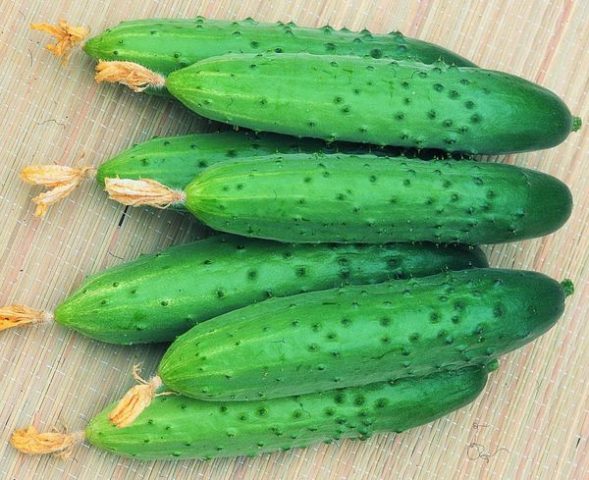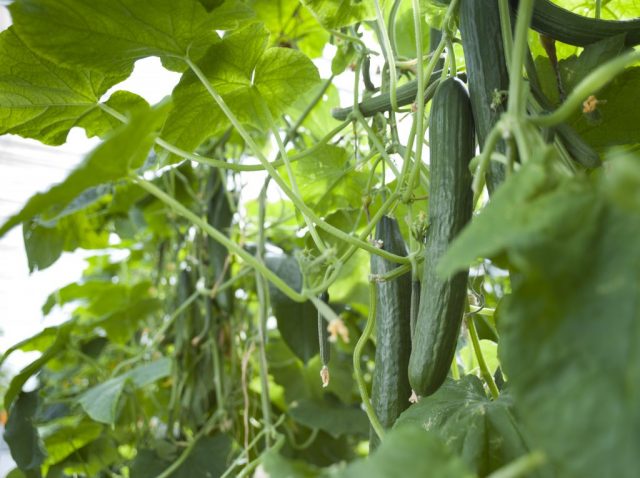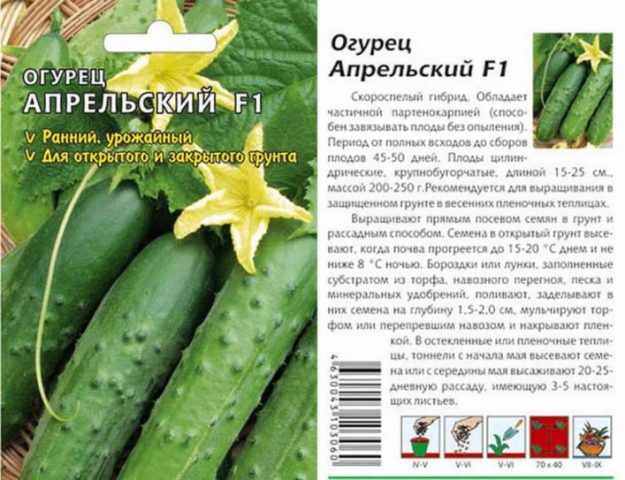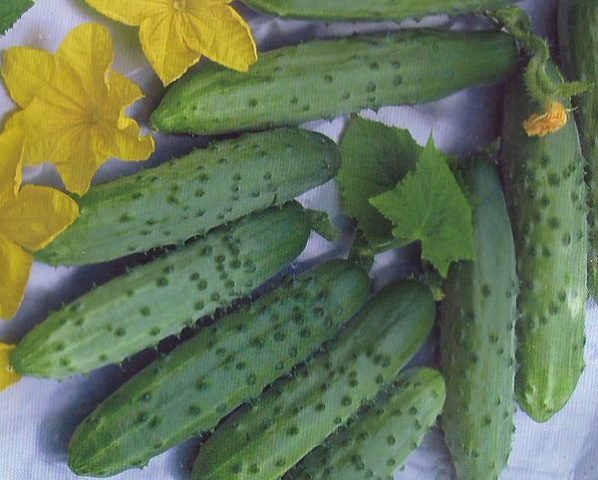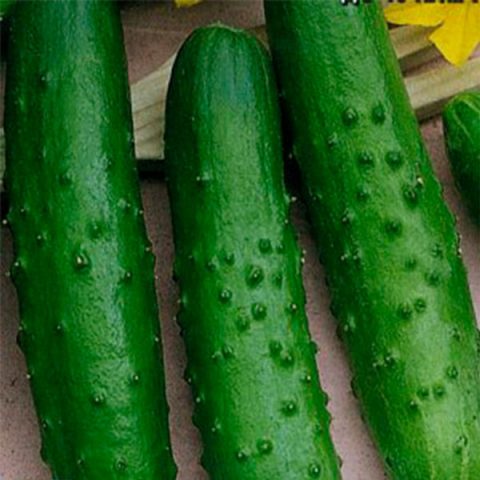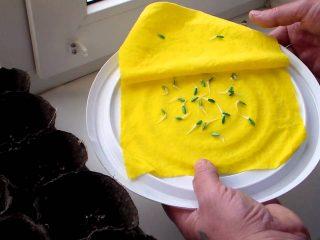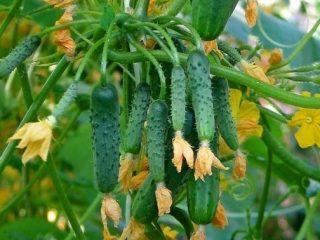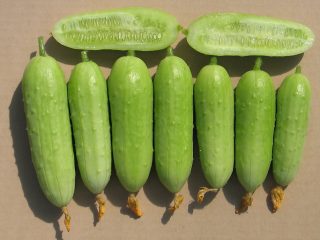Content
Cucumbers are the most common vegetables found in any garden. When choosing a variety, gardeners focus on several parameters: productivity, ease of care, and disease resistance. The April cucumber has been tested for several decades, and therefore continues to be popular. But this variety also has its own secrets that you should know.
Detailed description of the variety
The main advantage of this variety is that it does not need insects for pollination. This allows you to successfully grow April cucumber in a greenhouse, as well as on a windowsill or even on a balcony. These cucumbers were bred in 1977 and since then have been one of the most popular and versatile varieties. This is a first-generation hybrid, which has a central lash length of about 2 m. At the same time, the side lashes do not grow. Most of the flowers on the plant are female.
Description of fruits
The April cucumber variety is distinguished by dark green fruits. Their length is 15-25 cm. The surface of the fruit is ribbed with slight fluff.The shape of cucumbers is cylindrical. This hybrid, together with the Zozulya variety, received first place at an international exhibition in terms of taste.
The peculiarity of April cucumbers is that when overripe they do not become bitter and do not overgrow. Also, the variety is not prone to yellowing.
The weight of one fruit varies between 200-250 g.
Is it possible to preserve April cucumbers?
April cucumber f1 is suitable for fresh consumption. It is mainly intended for salads, cold appetizers, and soups. But canning cucumbers is quite possible. The size allows you to pickle and pickle the fruits in their entire state.
Main characteristics of the variety
According to reviews, cucumbers of the April F1 variety look like in the photo in a greenhouse; they are not frost-resistant varieties. They love good light and enough warmth.
Cucumbers are resistant to most common diseases. At the same time, they are susceptible to white rot. Gardeners are pleased with the hybrid’s undemanding nature in terms of care and the soil in which the variety grows. It does not require frequent fertilizing and is suitable for cultivation throughout almost all of Russia.
Productivity
April cucumbers are high-yielding varieties with early ripening. It takes 1.5 months from the first shoots to the first harvest. At the same time, the peculiarity of this hybrid is its uniform yield. There won't be enough cucumbers for the whole season. It is advisable to plant another variety of later cucumbers.
Productivity per 1 sq. m is up to 24 kg. In the first 2-3 weeks of fruiting, the yield per 1 m2 – 15-17 kg.
Resistance to pests and diseases
Apart from white rot, the April variety is otherwise resistant to disease. Pests also do not seriously affect this variety if proper crop rotation is used on the site and basic preventive measures are carried out.
Pros and cons of the variety
Like other varieties of cucumbers, the April variety, according to description and reviews, has a large number of advantages. But there are also disadvantages. This is important to consider when choosing cucumbers for planting.
Advantages of the variety:
- self-pollinating;
- early maturity;
- friendly and simultaneous fruiting;
- high resistance to diseases;
- not capriciousness in care.
The disadvantages include:
- fruiting for a short period;
- predisposition to white rot.
But there are many more advantages, which is why this hybrid successfully thrives in the beds and balconies of cucumber lovers.
Growing April cucumbers
If you follow the specific agricultural technology, cucumbers will give a stable and large harvest. April cucumber f1 is suitable for growing both by seeds and by seedlings. The parthenocarpic properties inherent in this hybrid allow it to be grown absolutely without the participation of pollinating insects, but if insects do pollinate the cucumber, then on average the yield increases by 25%.
Sowing time
The timing of sowing cucumbers depends on how they will be grown: seedlings or not.
When planting seedlings, the optimal age of seedlings for transferring to open ground is 25 days, when 4-5 leaves are formed. Therefore, the timing of sowing depends on when it is necessary to plant seedlings in open ground. In the southern regions - early May, and in the more northern regions - June.
As for growing cucumbers without seedlings, in this case the sowing time depends on the agricultural conditions. For a greenhouse, the sowing time is mid-April, and for open ground - the end of May.
Selecting a location and preparing beds
To plant April cucumbers, you need to select a site with loamy or sandy loam soils. It is better to choose a planting site on the south side of the site, in a sunny place. This is a light-loving variety that will not be able to produce a full harvest in the shade. In the fall, rotted manure, superphosphate, and potassium fertilizers are applied to the cucumber plot.
After applying fertilizer, the area should be dug up. If the soil is characterized by high acidity, then dolomite flour, ash or lime are added to the site in the fall.
Site preparation continues in the spring. The soil is fed with nitrogen fertilizers and compost is added to the hole immediately before sowing.
To comply with the basic rules of crop rotation, you should not plant cucumbers in the same place. The best predecessors are potatoes, garlic, peas, beans, and beets.
How to plant correctly
Cucumber seeds should be planted to a depth of no more than 1.5 cm. You should not plant them deeper than 2 cm, since it will be difficult for the seedlings to break through. Place 1-2 seeds into the prepared hole. After germination, plantings should be deflated if they are to be frequent. The ideal distance between cucumbers is 30 cm. The distance between rows is 50 cm. When thinning, it is important not to damage the root system of a nearby growing specimen. It is better to cut close to the ground.
When planting seedlings, they must be buried in pre-prepared holes.After thinning, it is recommended to treat the seedlings with a growth stimulator.
Aftercare for cucumbers
To obtain maximum yield, you will need to create optimal conditions. It is important to follow all the basics of agricultural technology and carry out proper watering, loosening, fertilizing and disease prevention. According to descriptions and reviews, the April cucumber f1 is easy to care for, but it has its own nuances.
Watering is carried out depending on weather conditions. In open ground, April cucumbers do not need to be watered if there is regular rain. If there is little rainfall, then the plantings need to be watered once every 2 days. If there is no precipitation, watering is carried out every day.
Moreover, if the ambient temperature is above + 30 °C and there is no rain, then you need to water the cucumbers 2 times a day.
The water should be warm so that the root system does not become overcooled.
After watering, it is recommended to loosen the soil. It is better to do this regularly before the cucumbers begin to bloom. But weeding should be carried out constantly, as needed. Weeds can take away some of the nutrients and also spread diseases.
For young plants, pinching is recommended only after the shoots have reached at least 6 cm in length.
To make caring for cucumbers easier, it is recommended to tie the plant. There are several ways to tie:
- Horizontal - tie a strong twine to wooden or metal supports. The method has a disadvantage - hanging shoots can create shadows for the rest of the plant.
- Vertical - the string is pulled vertically, and the cucumber stretches upward along it.
- Mesh — a special mesh is used.
Cucumbers respond positively to feeding. The first time it is necessary to apply fertilizer 2 weeks after sowing. Add ammonium nitrate.
Fertilizing with potassium fertilizers is carried out during the formation of shoots. At the beginning of the fruiting period, organic matter or mineral fertilizers are applied.
The April cucumber is resistant to most diseases, but it must be protected from white rot.
Rot can appear due to excessive planting density. It is important to constantly ventilate the greenhouse so that the air does not stagnate.
To combat emerging white rot, it is necessary to spray with special solutions according to the instructions.
Conclusion about April cucumbers
The April cucumber is a popular and unpretentious variety that is widely used by summer residents and gardeners. A distinctive feature of this species is the absence of the need for pollination. Its high taste qualities are also noted. This variety is an early variety and is used as a salad cucumber.
Reviews
